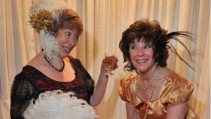Samuel Richardson. Cambridge: CUP.
Repr. 2009 and on demand.
This book contributed largely to the Richardson “renaissance,” the reappraisal of his novels as the most remarkable and influential of the eighteenth century. As an outsider, Richardson found common cause with women, realising that the relationship between men and women is as politically charged as that between monarch and subject. I offer a close reading of Richardson’s three novels, identifying his way of representing this relationship by means of archetypes within his masterpiece Clarissa in particular: Eve, Lucretia, Queen Elizabeth on the one hand, Satan, Don Juan, Faust and Caesar on the other.
Order
Buy Online: Cambridge University Press
Reviews
Jocelyn Harris has written what purports to be an introduction to Richardson, and indeed it is clear and orderly enough to be within the reach of all but the most perfunctory students at undergraduate level. At the same time, she offers a challenging interpretation of the three great novels, in terms of sexual and domestic politics.
Jocelyn Harris’s Samuel Richardson goes about its work in an intelligent and attractive way. It is a valuable introduction to a great but uneven novelist.
Jocelyn Harris’s book, which offers a lucid discussion of his work from a perspective informed less by contemporary literary theory than by historical and literary knowledge. Approaching her subject with sense, sensitivity and infectious enthusiasm, Dr. Harris has written what is by far the best book on Richardson since Margaret Doody’s A Natural Passion . . . excellent on the importance of political imagery . . . fascinating …perhaps most impressive in her book is her sensitivity to allusions and resonances to literature, legend and history . . . her book will be of great value even to confirmed Richardsonians.
One of the best literary criticism books I have read on Richardson’s work and in particular on his masterpiece Clarissa. Jocelyn Harris presents a wonderful reading of Clarissa and Lovelace and gives a fascinating view of their characters, psychological make-up and tragic destiny. Harris is very easy to read and uses clear, concise and completely accessible language to develop and investigate her theories. … this book provides what many other literary criticism works on Clarissa fail to do, it provides a very refreshing viewpoint on Richardson’s most famous characters (Lovelace and Clarissa) and does so with great clarity while leaving the reader free to question if they agree or not. I highly recommend this books as it is short, sharp and to the point and provides a truly accessible analysis of this great novel.
Harris’s strong suit — her ability to show, in detailed and convincing fashion, how each of Richardson’s novels is partially shaped by his deployment of allusions to a variety of important contexts, literary, historical, and above all, political . . . spirited, highly readable . . . It richly serves its purpose as an introduction to Richardson, but also has a strong appeal for experienced readers of the novelist because it contains so much that is fresh.
A book which will constantly illuminate Richardson’s novels for new readers and deepen the responses of more advanced students.








